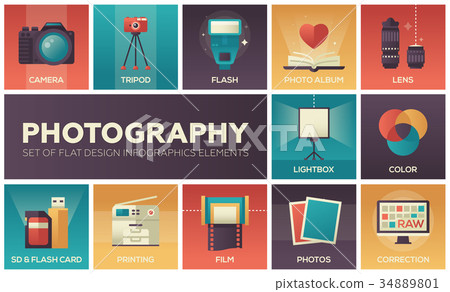What Every Professional Photographer Needs To Understand About Illumination
What Every Professional Photographer Needs To Understand About Illumination
Blog Article
Writer-Rogers Covington
As a digital photographer, you know that illumination can make or damage your photos. Recognizing the nuances of both natural and synthetic light is important for catching the state of mind and quality you go for in your job. Whether you're going after the perfect golden hour glow or tweak your artificial configurations, understanding these components can raise your digital photography considerably. Yet there prevail challenges that numerous overlook, and recognizing them can transform your method to every shoot. Let's discover what you might be missing out on and how it can influence your results.
Understanding All-natural Light
Comprehending natural light is vital for any kind of photographer seeking to boost their job. It's the foundation of fantastic photography, affecting mood, tone, and clarity. When you shoot outdoors, focus on the moment of day. The gold hour-- soon after sunrise and prior to sunset-- offers soft, warm light that can transform ordinary scenes into spectacular photos.
Don't undervalue the power of cloudy days. Cloud cover diffuses sunshine, producing a soft, even light that's perfect for portraits and macro digital photography. You'll discover colors pop in this sort of illumination without extreme shadows.
Positioning matters, as well. Constantly consider your subject's positioning to the light. If the sunlight's behind your subject, you may end up with a shape, which can be significant however mightn't be what you want. On https://www.bjp-online.com/2020/02/how-does-it-feel-to-be-homeless/ , straight sunlight can develop unflattering darkness.
Explore angles; sometimes, transforming your viewpoint can yield impressive outcomes. Usage natural reflectors, like water or sand, to jump light onto your subject, including dimension.
Mastering Artificial Light
Grasping artificial light is important for professional photographers who intend to take their abilities to the next degree. Whether you're using speedlights, workshop strobes, or continuous lights, comprehending how to control these resources can considerably improve your pictures.
Start by familiarizing yourself with the fundamentals of light top quality, direction, and shade temperature. Experiment with various modifiers like softboxes, umbrellas, or grids to control the gentleness or violence of the light.
You'll discover that soft light usually creates complementary outcomes, while harsher light can include drama and deepness. Do not avoid shadows; they can improve the three-dimensionality of your subjects.
Pay close attention to the positioning of your lights. A light positioned also near your topic can create uncomplimentary outcomes, while as well far can result in a lack of detail. Utilize a light meter or your cam's pie chart to guarantee you're subjecting properly.
Lastly, keep in mind that synthetic light can be blended with ambient light for innovative effects. Stabilizing these sources could take technique, once you grasp it, your photography will absolutely shine.
Strategies for Various Circumstances
When you enter various shooting scenarios, adapting your lighting techniques is essential for catching the most effective pictures. For outdoor pictures, make use of the golden hour-- morning or late afternoon light-- to soften shadows and boost skin tones.
If it's a rough lunchtime sunlight, take into consideration utilizing a reflector to bounce light back onto your topic or look for shaded locations for a much more even direct exposure.
In low-light situations, like interior events, increase your ISO and use a vast aperture to let in more light. A tripod can help eliminate cam shake, allowing for longer direct exposures without blurring.
If you're contending evening, trying out off-camera flash to create vibrant illumination and deepness in your images.
For product digital photography, use diffused lights to stay clear of harsh reflections. Softboxes or light camping tents can aid achieve this effect.
When photographing landscapes, think about the instructions of light and time of day, as it can substantially transform the state of mind of your shot.
Constantly be ready to change your settings and positioning based on the circumstance, as flexibility is essential to grasping lighting in photography.
Conclusion
To conclude, mastering lighting is crucial to boosting your photography skills. Embrace https://zenwriting.net/tuan9carrol/creative-photography-ideas-releasing-your-imagination during golden hour, and don't avoid trying out artificial light strategies. By adapting your approach to different scenarios, you'll record sensational photos that reverberate with feeling and quality. Keep in mind, the best lights can change an ordinary shot into something extraordinary, so keep practicing and improving your understanding of both all-natural and artificial light. Delighted capturing!
